Key takeaways
- Experiential learning emphasizes active participation and reflection, transforming tasks into meaningful understanding.
- Tools that empower student voice and foster community connections enhance engagement and ownership in learning.
- Designing activities that spark curiosity and allow for creativity leads to deeper investment and personal transformation in students.
- Measuring engagement involves both qualitative and quantitative methods, focusing on moments of genuine involvement and reflection on learning experiences.
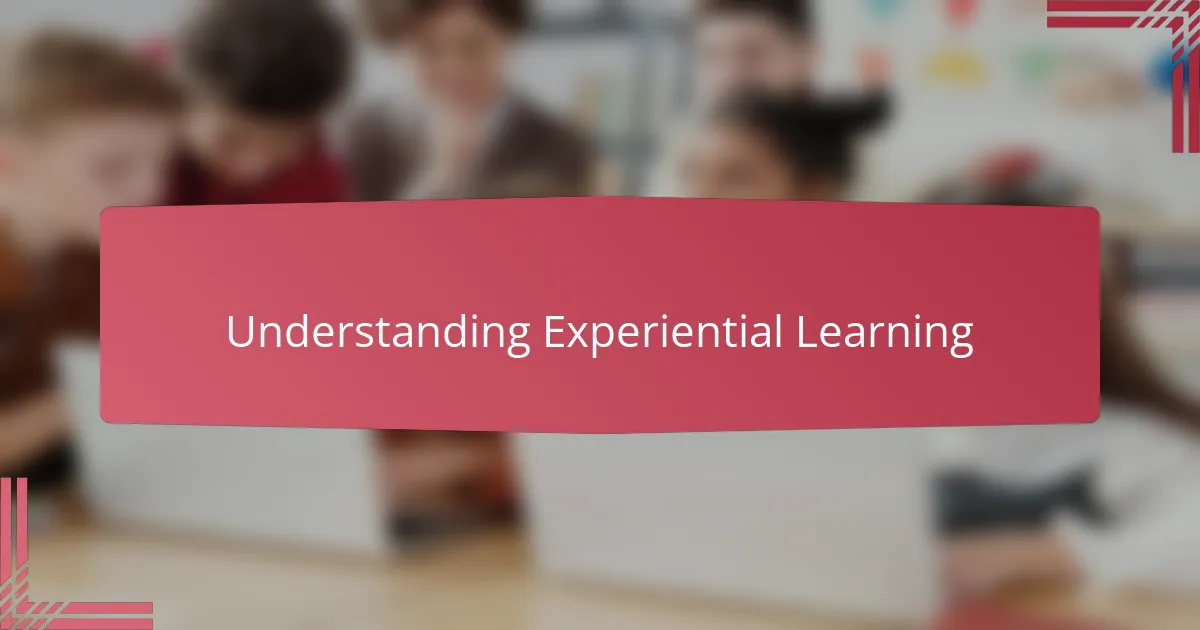
Understanding Experiential Learning
Experiential learning is about more than just absorbing information—it’s about diving into experiences and reflecting on them to truly understand. I remember when I first tried this in my classroom; the shift from lectures to hands-on projects transformed the energy and focus of my students. Have you ever noticed how people tend to remember something better when they’ve done it themselves?
This approach connects learning to real life, making it meaningful and relevant. It challenges students to think critically and adapt, rather than passively receive knowledge. When I saw my students grappling with real-world problems, their engagement skyrocketed—not because they had to, but because they wanted to.
At its core, experiential learning is a cycle of action and reflection. I often ask myself, am I giving my students enough space to reflect on what they’ve experienced? Without this reflection, the learning feels incomplete. That’s why I encourage journaling or group discussions after activities—these moments deepen understanding and spark personal growth.
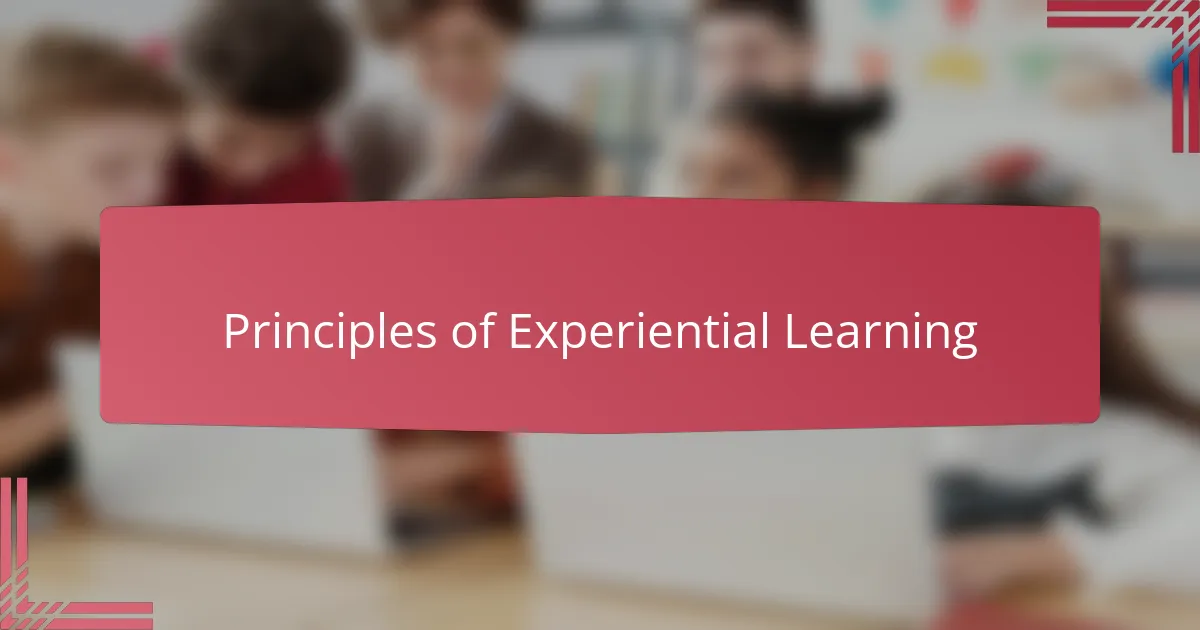
Principles of Experiential Learning
One principle that stands out to me is the idea that learning must be rooted in concrete experiences. I’ve noticed that when students physically engage with a task, their curiosity naturally kicks in. It’s like their brains light up because they can connect the dots between theory and practice.
Another crucial aspect is reflection. I once had a student say after a project, “I never thought about how what we learned applied outside the classroom.” That moment reminded me that without reflection, those experiences risk becoming just another checkbox. Reflection transforms doing into understanding.
Finally, experiential learning thrives on active participation and responsibility. I’ve seen students take ownership of their learning when they realize their choices shape the outcomes. Doesn’t it feel more empowering to learn when you have a say in the process? This principle changed how I design lessons—making space for student voice and decision-making is non-negotiable.
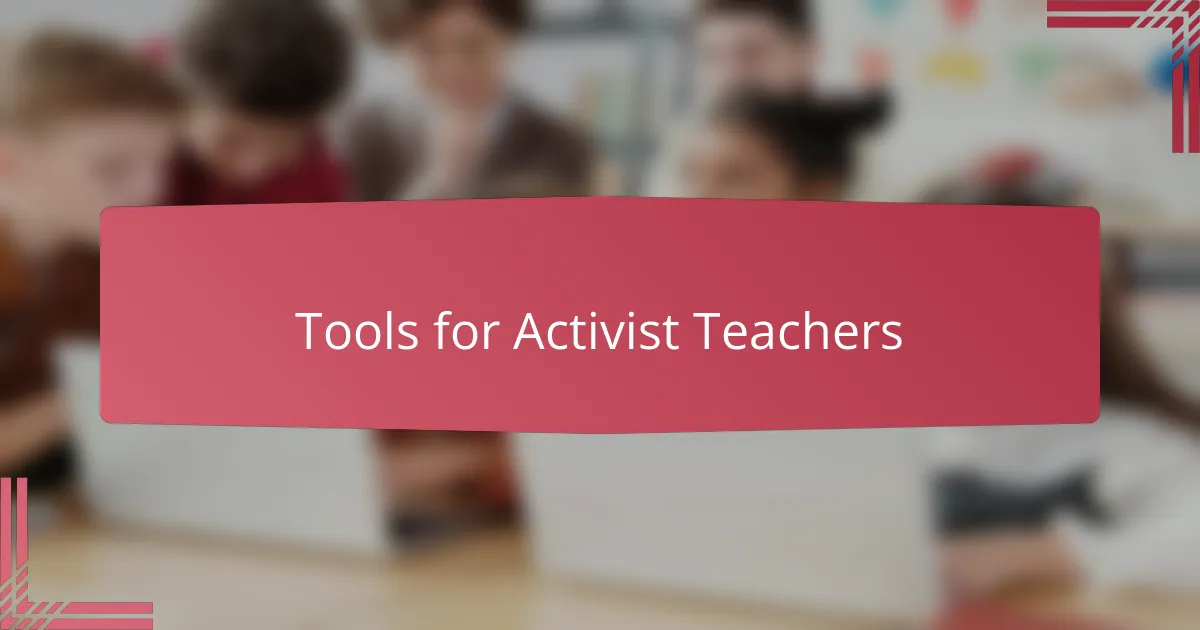
Tools for Activist Teachers
When I first started seeking tools for activist teaching, I realized that technology alone wasn’t enough—it was about finding resources that amplified student voices and fostered real-world connections. Digital storytelling apps and collaborative platforms became my go-to because they allowed students to share their experiences and advocate for causes they cared about, turning abstract concepts into personal narratives.
But tools don’t have to be high-tech to be powerful. I’ve often relied on simple things like community mapping or participatory budgeting exercises. These methods invite students to work together on issues affecting their own neighborhoods, which sparked intense discussions and deepened their sense of agency. Have you tried tools that connect students directly with their communities?
What matters most, in my experience, is choosing tools that invite active participation rather than passive consumption. When students create, analyze, and reflect using these tools, they move from receivers of information to changemakers. I always ask myself: does this tool empower students to act on their beliefs? If the answer is yes, then it’s worth integrating into the classroom.
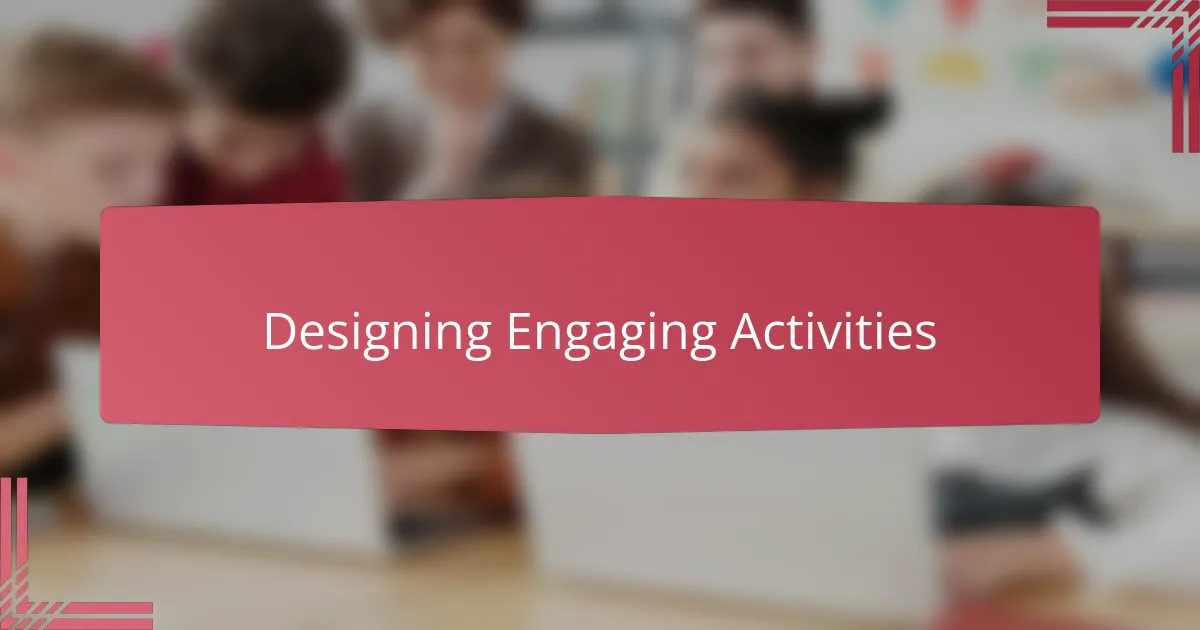
Designing Engaging Activities
When I design engaging activities, I start by thinking about what will genuinely spark my students’ curiosity. It’s surprising how even simple, hands-on tasks can ignite their enthusiasm—like when I had them role-play a community meeting, and suddenly, those abstract civic concepts became urgent and real. How often do we give students the chance to step into real-world roles and experience the stakes firsthand?
I’ve found that the best activities are those that invite choice and creativity. Last semester, I let students pick their own social issue projects, which led to wildly diverse and passionate work—from organizing mini-campaigns to creating awareness videos. When students own the direction of their learning, their investment deepens, and I witness a sense of purpose emerging in the room.
Reflection is the final piece that transforms an activity from a mere task into meaningful learning. After one project, I asked my students to share what surprised them or challenged their thinking, and the honesty in their responses was eye-opening. Don’t you think it’s in these moments of pause that learning truly settles in? I make space for these conversations because they turn experience into insight.
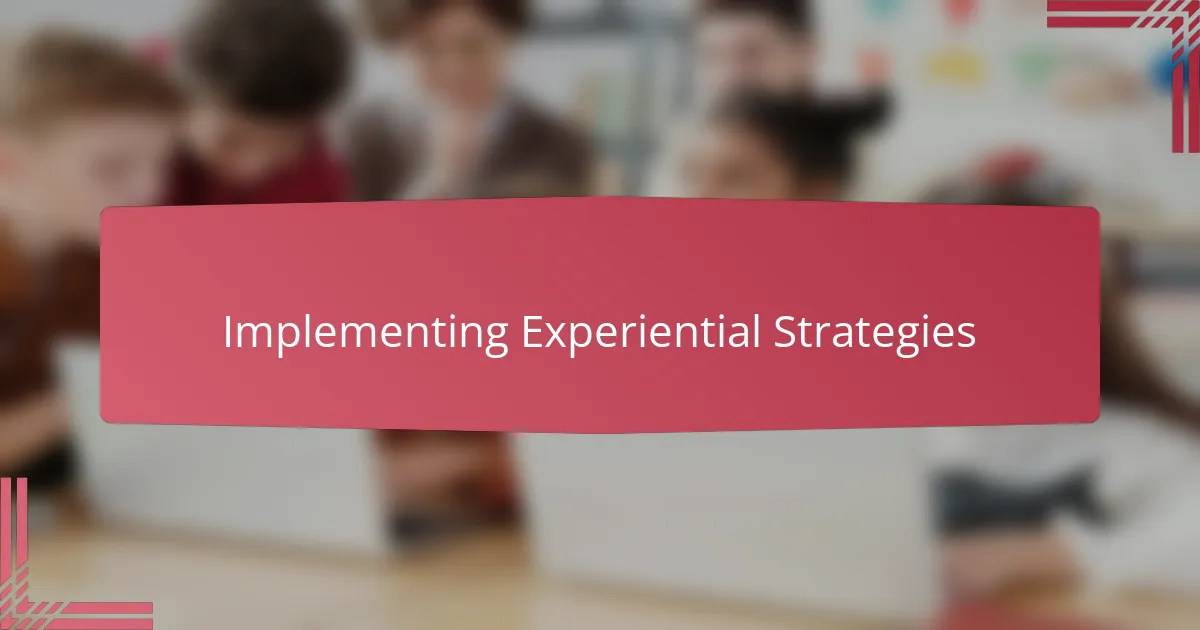
Implementing Experiential Strategies
Implementing experiential strategies means stepping back and creating opportunities for students to engage directly with the material. I recall a project where students built a model sustainable garden; seeing their excitement as they connected science, environment, and community was rewarding. How often do we allow students that kind of hands-on involvement instead of just telling them what’s important?
One challenge I faced was balancing guidance with freedom. I learned that providing a clear framework but leaving room for exploration lets students take ownership while staying focused. When students realize their decisions shape the outcome, their motivation skyrockets, and the classroom buzzes with energy.
It’s also crucial to build in moments for reflection throughout the process. After a service-learning project, I asked students what emotions and thoughts surfaced. Their honest reflections helped me understand their growth far beyond grades. Don’t you think learning becomes richer when we pause to make sense of experiences together?
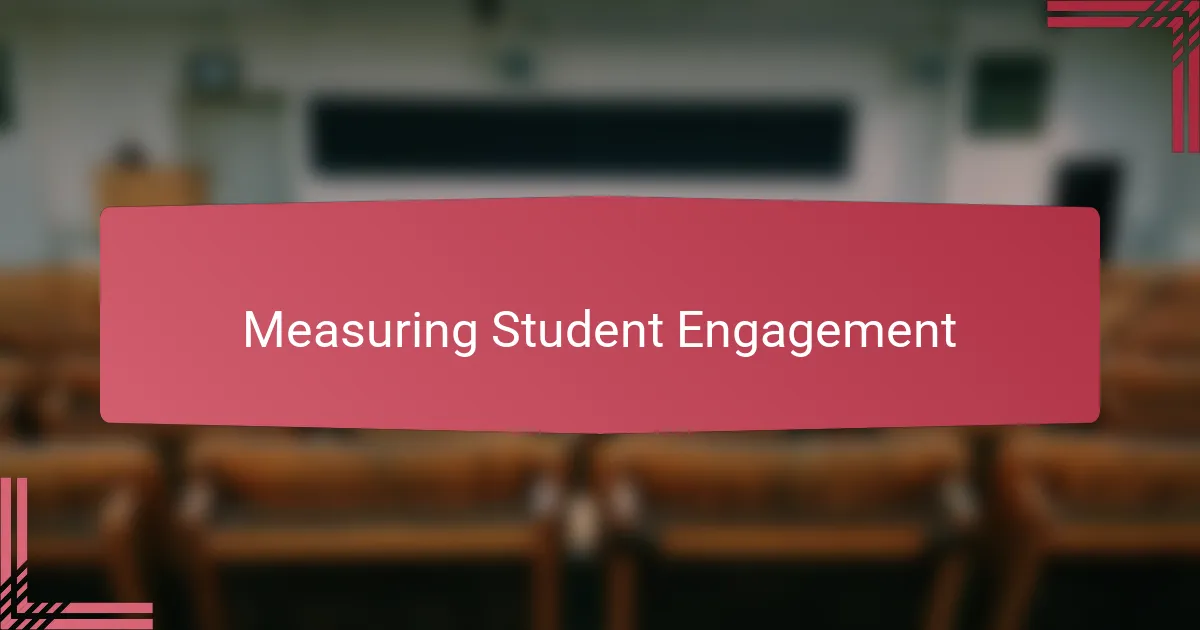
Measuring Student Engagement
Measuring student engagement can feel a bit like trying to catch lightning in a bottle. I’ve found that it’s not just about tallying participation or attendance—it’s about tuning into the energy in the room and noticing when students lean in, ask questions, or take initiative. Have you ever observed a student’s eyes light up during a project? To me, that sparkle often signals genuine engagement.
Sometimes, quantitative tools like surveys or quick check-ins help me gauge how connected students feel to the material. Yet, I rely heavily on qualitative signs—like meaningful discussions or when students choose to extend their learning beyond the assignment. After one service project, a student stayed after class to share their new ideas for community change; those moments tell me more than a score ever could.
I’ve also learned that engagement isn’t a fixed thing—it fluctuates throughout an activity. So, I build in pauses for reflection and feedback, asking questions like, “What challenged you today?” or “How did this experience change your thinking?” These conversations not only measure engagement but deepen it, turning participation into transformation.
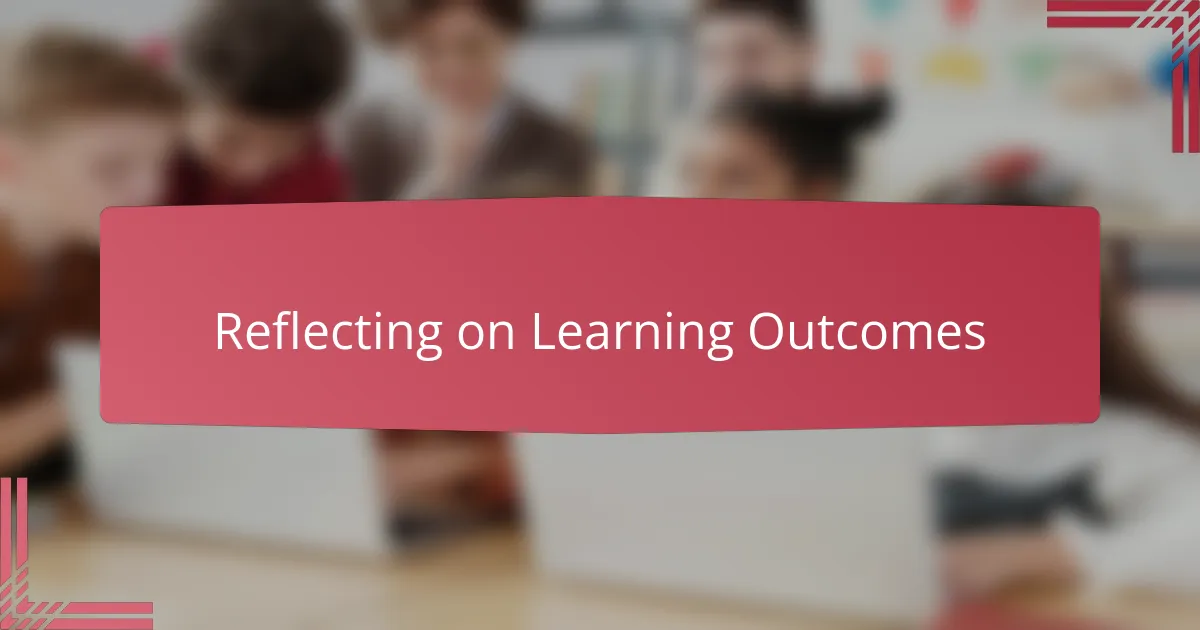
Reflecting on Learning Outcomes
Reflecting on learning outcomes feels to me like the heartbeat of experiential learning. I recall a time when, after a community-based project, I sat with my students and asked what they truly took away beyond the facts. Their thoughtful, sometimes surprising reflections revealed not just what they learned, but how their perspectives shifted in unexpected ways.
Have you noticed how reflection transforms action into lasting understanding? I often set aside time for group discussions or reflective journaling because it turns a fleeting experience into something meaningful. It’s in these moments of pause that I see students connect their efforts to broader social issues, deepening both their knowledge and commitment.
Sometimes reflection also uncovers emotional growth that standard assessments miss. After one intense project on social justice, a student quietly shared how the experience challenged their assumptions and inspired new activism. These authentic insights remind me that learning outcomes go far beyond test scores—they’re about personal transformation.